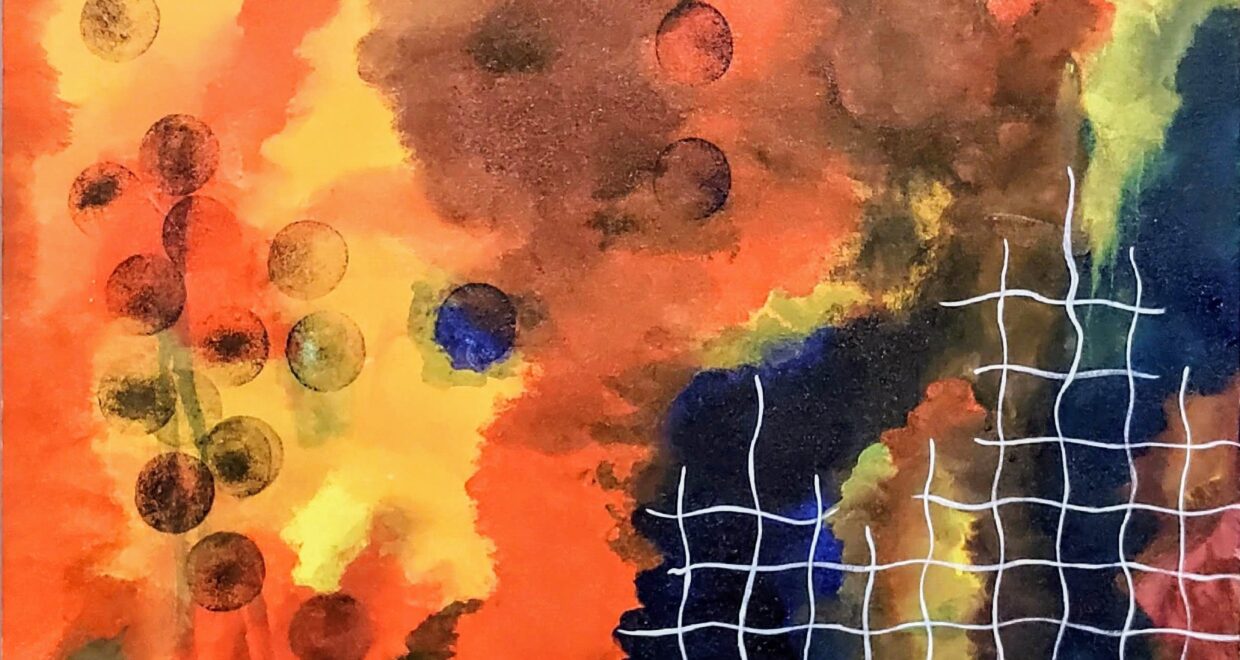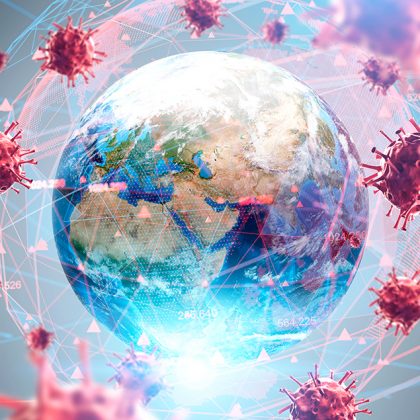Eclipse of Identity: Reflections on Netflix’s Adolescence
The July edition of Muses – the arts blog from BJPsych International – features a belated review of the multiple Emmy-nominated TV series, Adolescence, and an accompanying artwork painted by one of the authors, Dr Sravanti.
Warning: Spoiler Alert
Adolescence, a gripping Netflix limited series, opens with a disquieting scene: police arriving at a seemingly ordinary British home, informing the bewildered parents that their 13-year-old son, Jamie, has been arrested. The boy is led away in handcuffs as his shocked parents struggle to comprehend what has just happened. The episode ends with a harrowing revelation: Jamie stabbed a female peer multiple times, leading to her death.
The series gradually reveals that Jamie wasn’t the boy they believed him to be. Neither his teachers nor his family saw it coming. Jamie had no prior contact with mental health services, came from a stable nuclear family, attended school regularly, and had no classical “risk” markers. This absence of obvious red flags haunts both the characters and the viewers: Why did he do it? Where did it come from?
As the police investigate Jamie’s life, the focus shifts to his school. Here, the investigating officer’s teenage son becomes an unexpected guide into a parallel digital world of adolescence, filled with unfamiliar codes: Incel, red pill, Manosphere, even the subtle language of emojis. This moment in the narrative is quietly devastating. It starkly reveals the generational digital divide – how adolescents often navigate emotionally charged virtual worlds that remain largely invisible to those who share their physical space. Jamie’s search for identity is instead hijacked by toxic virtual ideologies masquerading as belonging.
One of the most powerful elements of the series is the therapeutic interview between Jamie and the psychologist. Filmed with restraint, the sessions are a masterclass in adolescent interviewing: open-ended questions, emotional containment, neutral stance, and gentle Socratic probing. Yet, even this skilled intervention cannot undo the ripple effects. The final episodes centre on Jamie’s devastated family. We witness their shame, grief, and isolation. A particularly moving scene shows Jamie’s father celebrating his birthday in silence, the family enduring public harassment—some of it from teenage boys who mimic the same toxic masculinity that ensnared Jamie. There are conversations about moving away, starting over, escaping the scrutiny. And then comes the call – Jamie phones in to wish his father a happy birthday. The joy is fleeting. We hear their silent screams of distress, helplessness, and the profound ache of loving someone they no longer recognise.
Adolescence isn’t just a series! It’s a mirror reflecting how disconnected society has become from its youth. It challenges viewers to reconsider how we define vulnerability. It makes visible new risk factors – digital alienation, toxic online identities, distracted parenting, and societal ideals of masculinity that silently thrive in seemingly “normal” lives. This is essential viewing for anyone who works with or cares for young people. This reflection is accompanied by the artwork “Colors of Eclipse”, capturing the tumultuous journey of adolescent identity depicted in the series. Vibrant hues reflect emotional intensity; the white grid, the intruding digital media; and dark patches, moments of confusion. Like Jamie’s story, it evokes how an emerging self can be eclipsed by overwhelming external forces.
Welcome to Muses – the arts blog from BJPsych International. This new blog aims to highlight international art and artists, particularly from low-and-middle-income countries, with a focus on mental health. We welcome submissions for consideration, such as, comments on artwork, visual arts, literature, drama, films, podcasts, and videos. Do have a look at the instructions for blog authors for details on how to submit. General enquiries about the blog: BJPInternational@rcpsych.ac.uk
Dr Marinos Kyriakopoulos, Editor-in-Chief, BJPsych International.




